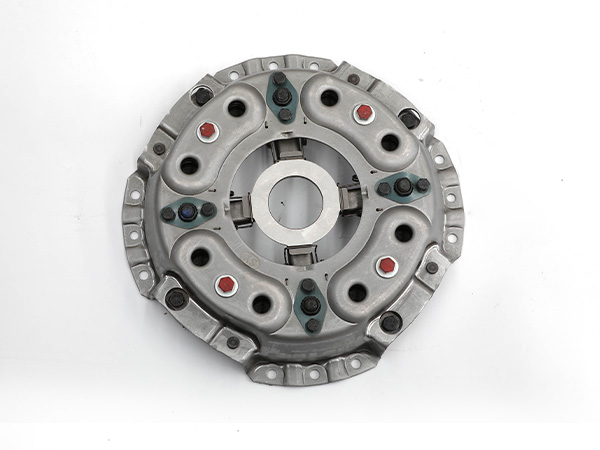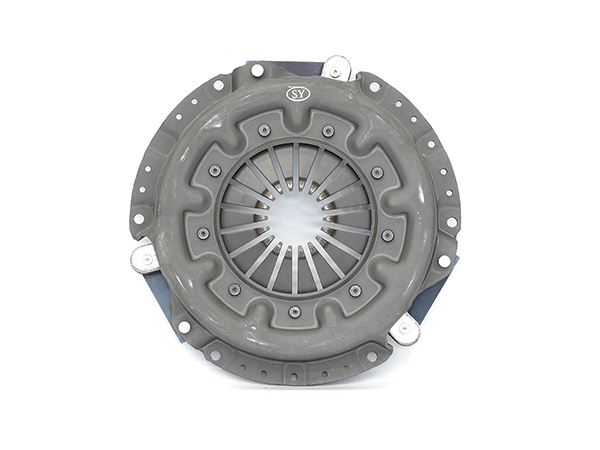The clutch generally exists in the gearbox of the tractor and plays the role of power separation. In a fuel vehicle, the heart of the power is the engine. When the power output from the engine is to be transmitted to the wheels, it must pass through the gearbox and the drive shaft in the middle. We can call this transmission chain the power transmission system. Then the clutch is located at the head end of the gearbox, and when it is engaged, it allows the transmission system to transmit power smoothly; when the clutch disengages, it cuts off the power transmission from the engine to the wheel end.
So why do you need to cut off the power from the engine to the wheel end? This is mainly related to the working characteristics of the engine. Like a normal engine, there will be a minimum speed requirement, that is, the lowest crankshaft rotation speed for the engine to work smoothly. For example, the minimum speed of the four-cylinder engine is about 500 rpm or more, and the three-cylinder engine is about seven or eight hundred rpm. Below this value, the engine is likely to stall. Therefore, when our car is stationary, the engine should also be kept above this minimum speed. At this time, it is necessary to have a power separation device to realize the connection and separation of power.
On the whole vehicle, the tractor clutch system can be roughly divided into two parts: the control system and the clutch. The control system is the clutch pedal that we operate with our feet, plus a set of transmission devices to transmit the action of the clutch pedal to the clutch. The clutch is a device used to realize the transmission and interruption of engine power.

Let’s talk about several forms of the clutch system. Among them, the control system generally has three forms, rod-type control system, zipper-type control system and hydraulic control system.
Like the rod system, which can be seen on previous tractors and old heavy trucks, the transmission device in their middle is composed of connecting rods. The transmission efficiency of this system is relatively low, the arrangement of the connecting rod is also relatively difficult, the space required is relatively large, and the stroke of the entire pedal will be relatively large. Therefore, the application of the stick control system is relatively limited.
The second type is the zipper control system. It transmits the operation of the pedal to the clutch through a zipper in the middle. This is a similar principle to the handbrake braking mentioned in the previous explanation of the braking system. Although the zipper system is more flexible in terms of spatial arrangement, its transmission efficiency is not high, and its service life is relatively short.
The transmission device of the hydraulic control system is mainly composed of the clutch master cylinder, the clutch sub-pump, and the hydraulic pipeline. The specific transmission principle is similar to the working principle of the braking system. Interested friends can click on my homepage to watch the video explaining the braking system. The hydraulic system is more efficient and can make the clutch engagement softer. If you want to continue to subdivide, there are semi-hydraulic structures and full-hydraulic structures. The main difference between them is in the driving mode of the release bearing, which is a semi-hydraulic structure. The release fork is pushed by the clutch wheel pump, and then the release bearing is pushed by the release fork. The fully hydraulic structure integrates the release bearing and the clutch sub-pump, and cancels the separation fork. This structure generally installs the sub-pump inside the gearbox.

After talking about the form of the operating mechanism, let’s look at the clutch. The clutch assembly mainly includes the clutch driven plate assembly and the clutch cover assembly. The most important thing in the driven disc assembly is the friction plate, and the most important thing in the clutch cover is the diaphragm spring. Diaphragm springs are different from coil springs on general shock absorbers. When we released the clutch pedal, there was no pressure in the master cylinder to push the wheel cylinder.
The diaphragm spring will press the friction disc of the clutch against the flywheel of the engine because of its own elasticity. In this way, the power of the engine is transmitted to the friction plate through the friction disc of the flywheel. The friction plate is connected with the input shaft of the gearbox through splines, and finally the power of the engine is transmitted to the wheels through the clutch and the gearbox.
When we step on the clutch pedal, through the hydraulic transmission device, the release bearing presses the diaphragm spring “in”. During the pressing process, the position of the diaphragm spring near the center of the circle will go inward, and the place around the circle will be It will be mentioned that since the circumferential position of the diaphragm spring is fixedly connected with the friction disc, the friction disc and the flywheel will be separated, thus realizing a cut-off of power from the engine to the gearbox.
When we are driving a tractor, if we are not skilled, it will often start to stall. The main reason is that when the car is about to start at idle speed, the power output by the engine needs to overcome the sum of all the resistance of the vehicle. The output characteristics of the engine at idle speed are smooth and continuous. If the time to release the clutch is too fast, the load on the engine will increase instantaneously, causing its speed to be too low, thereby stalling.

-80x80.jpg)
